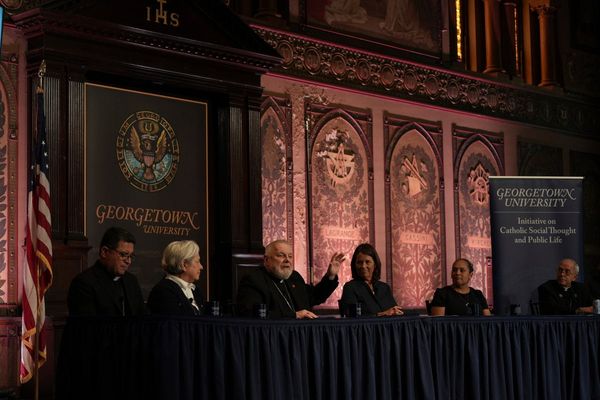Four years after expelling American troops, Afghanistan wants to move on from its conflict with the United States. The Taliban government is in talks with the Trump administration about restoring diplomatic ties, economic trade, and perhaps even security cooperation, according to The Wall Street Journal. But President Donald Trump has a price: Bagram Air Base.
Over the past week, Trump has repeatedly brought up the idea of putting U.S. troops back in Bagram. According to CNN, he has been pushing it to his national security team for months. "We're trying to get it back because they need things from us," Trump told reporters during a visit to Britain, later posting on social media that "BAD THINGS ARE GOING TO HAPPEN" if the U.S. military doesn't get Bagram.
The Taliban are not keen on the idea. "Even if the United States recognized the Taliban and pledged to rebuild all of Afghanistan, we would never give up a single inch of our country for their military presence," Foreign Minister Amir Khan Muttaqi told the Afghan outlet TOLOnews.
Even with the Taliban's consent, reopening Bagram might "end up looking like a re-invasion of the country," Reuters reports. According to Reuters' military sources, repairing, running, and defending the air base would require tens of thousands of troops supplied via long, complex, and expensive logistical lines. (Then–Defense Secretary Lloyd Austin put the number lower—but still high—in 2021 testimony to Congress, saying it would take "as many as 5,000 troops.") Rather than fighting for control of Afghanistan, these troops' role would be to stand guard against neighboring China.
"I liked [Bagram] not because of Afghanistan. I liked it because of China," Trump said in July 2024. That idea seems to have been put in his head by Mike Waltz, who served as his national security adviser from January to May 2025. During the U.S. withdrawal from Afghanistan, then-Rep. Waltz (R–Fla.) had publicly argued that giving up Bagram was a mistake because "we will no longer have a U.S. airfield in a country that borders China," which could have been useful to incite Uyghur resistance against Beijing or threaten China with a second front during a future Pacific war.
It was one of the many Hail Mary arguments by hawks who wanted to prevent a U.S. withdrawal. Rep. Adam Kinzinger (R–Ill.) argued that Afghanistan's mineral wealth was too valuable to give up. Democrats and Rep. Liz Cheney (R–Wyo.) tried to portray the Taliban as a Russian proxy, citing dubious intelligence about Russian operations in Afghanistan.
But China and Russia were not the real reasons these people wanted to stay in Afghanistan—or at least not the primary reasons. Waltz, for example, had said in 2017 that "we're in for a long haul and I think our nation's leadership needs to begin telling the American people, I'm sorry, we don't have a choice, we're 15 years into what is going to be a multi-generational war because we're talking about defeating an idea."
Now the idea of keeping Bagram has outlived the war that it was meant to prolong. What was supposed to be an excuse to keep fighting the Taliban has become an excuse to mend ties with them. The comments by Foreign Minister Muttaqi suggest that the Trump administration had given quite a generous offer for Bagram.
Turning former enemies into friends is no vice. In 1995, 20 years after communists forced the U.S. out of Vietnam, the communist government welcomed American diplomats and businesses back into Vietnam. And earlier this year, the Trump administration began the process to restore full diplomatic and economic ties with Syria. But friendships abroad do not have to come with a large American military presence overseas.
The post Why Does Trump Want U.S. Troops Back in Afghanistan? appeared first on Reason.com.







